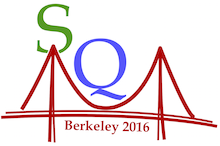Speaker
Martin Rohrmoser
(SUBATECH/Ecole des Mines de Nantes)
Description
Energetic heavy quarks passing through the hot and dense medium of a quark-gluon plasma (QGP), represented by the resulting mesons, are viewed as a suitable probe for the interactions inside of the QGP, in particular the mechanisms of energy loss, as they are less likely to thermalize within the medium and are mostly created at early stages of the medium evolution.
However, models of both, purely collisional energy loss as well as combinations of collisional and radiative energy loss are equally successful for reproducing the nuclear modification factor $R_{AA}$ and the elliptic flow $v_2$ [1]. To make progress for identifying the reaction mechanism an alternative observable, the angular correlations between two mesons were investigated, in an attempt to discriminate between the two different mechanisms. Azimuthal correlations between pairs of heavy mesons, like $D$-$\bar{D}$ pairs, allow for distinguishing the energy-loss scenarios [2]. We continue
these studies by investigating the angular correlations between pairs of heavy and light mesons ($D$ and $\pi$). This is motivated
by the fact that the emitted gluon in radiative collisions hadronizes and this hadrons is correlated to the emitting heavy quark.
For this study we created a Monte-Carlo code for the parton splitting in the vacuum together with an effective medium model. This program allows for studying the influence of the medium on parton propagation and, thus, on the correlations between the final mesons. We put special emphasis on the time evolution of the correlation and to identify those regions of the medium that
contribute mostly.
**References**
[1] P. B. Gossiaux, J. Aichelin, T. Gousset and V. Guiho, J. Phys. G **37** (2010)
094019 doi:10.1088/0954-3899/37/9/094019 [arXiv:1001.4166 [hep-ph]].
[2] M. Nahrgang, J. Aichelin, P. B. Gossiaux and K. Werner, J. Phys. Conf. Ser.
**509** (2014) 012047 doi:10.1088/1742-6596/509/1/012047 [arXiv:1310.2218
[hep-ph]].
Author
Martin Rohrmoser
(SUBATECH/Ecole des Mines de Nantes)
Co-authors
Pol Gossiaux
(Subatech)
Prof.
Thierry Gousset
(Subatech)
joerg aichelin
(Subatech/CNRS)
